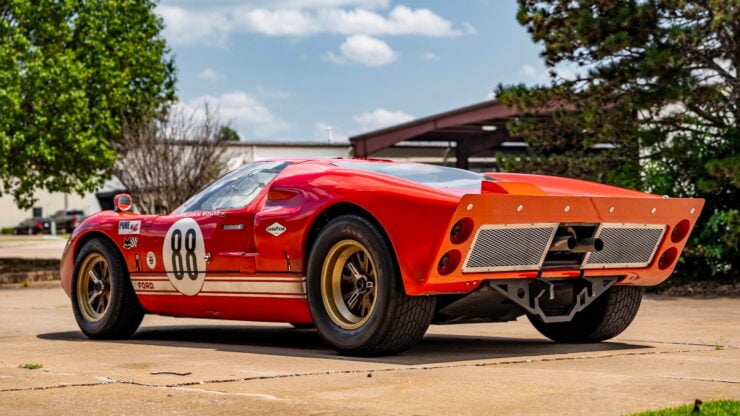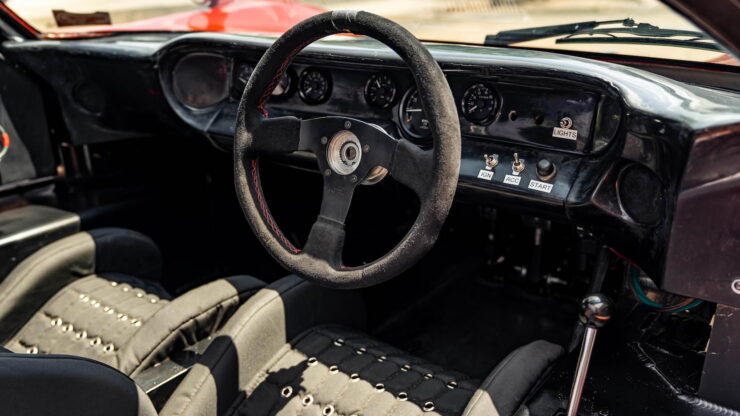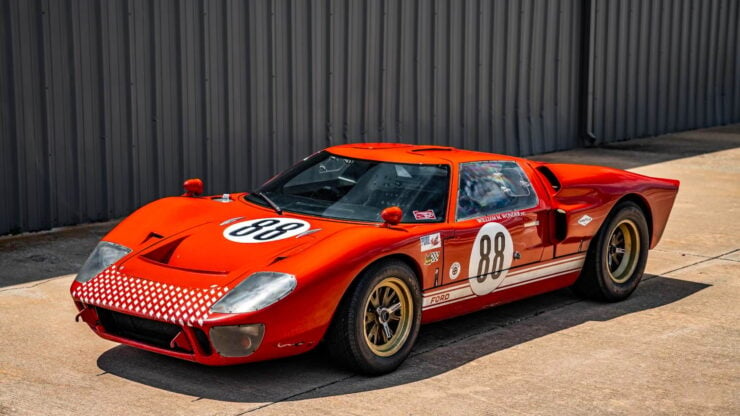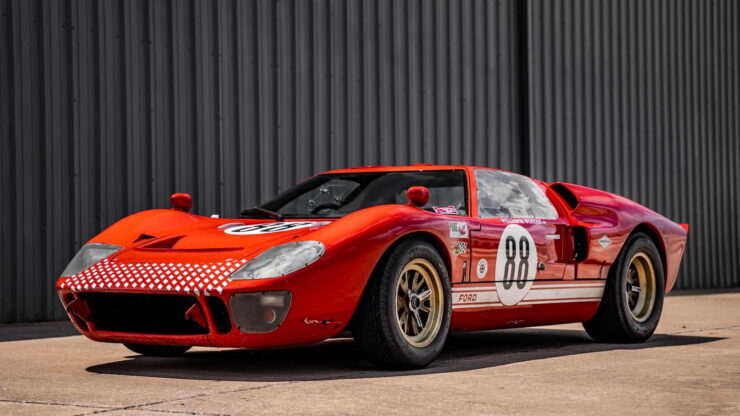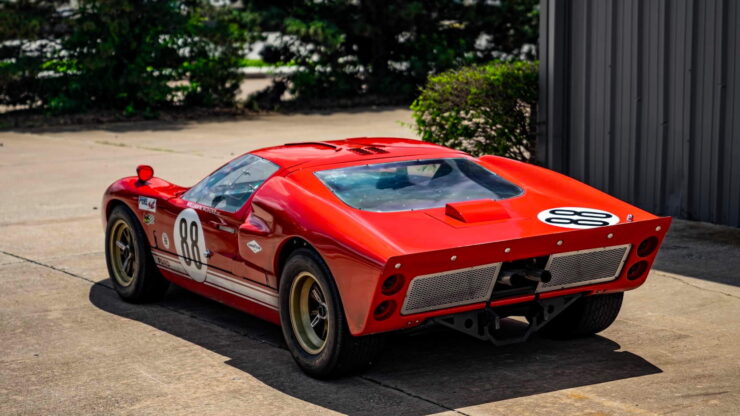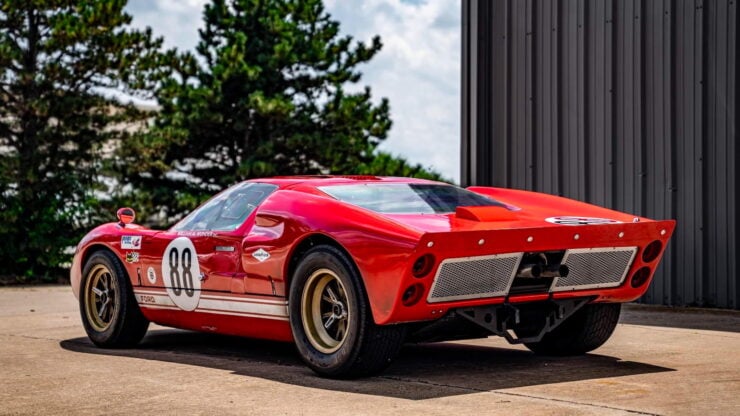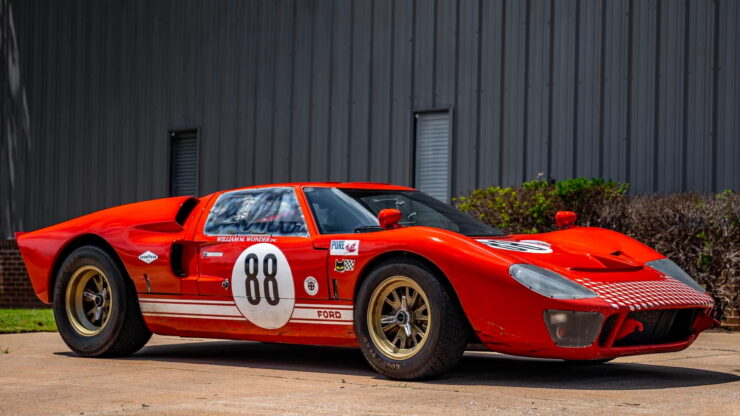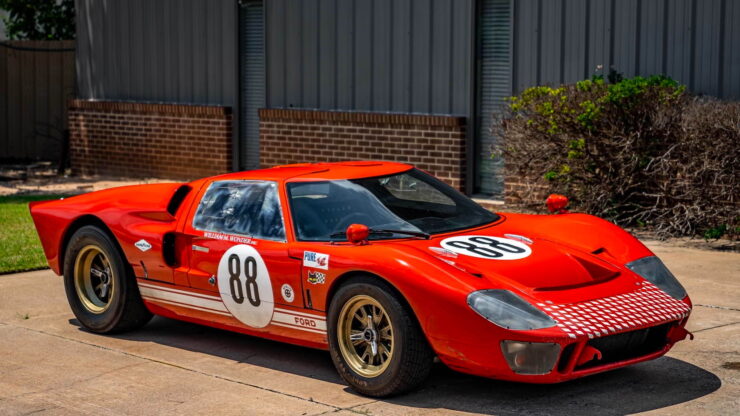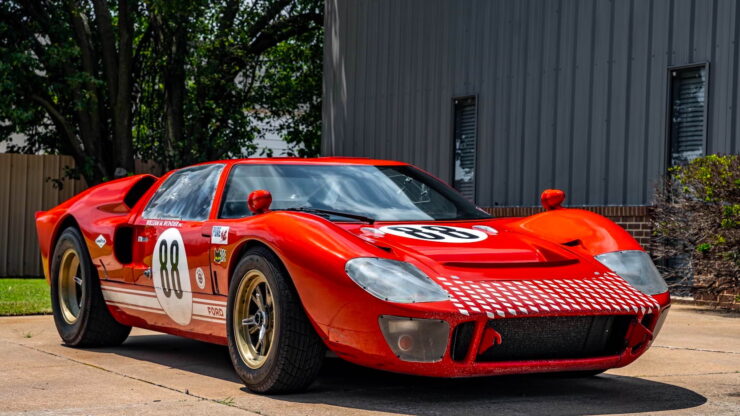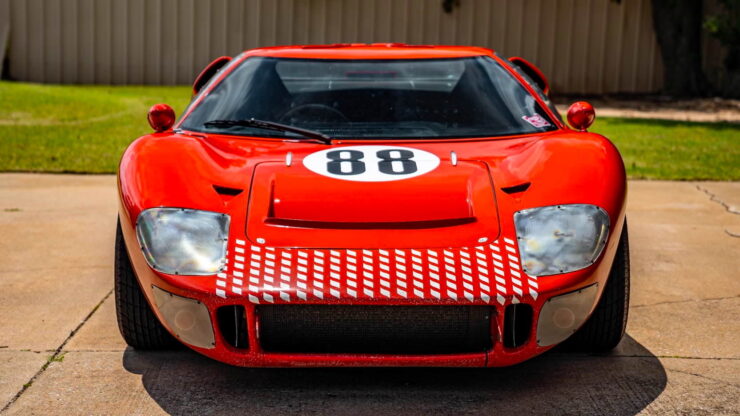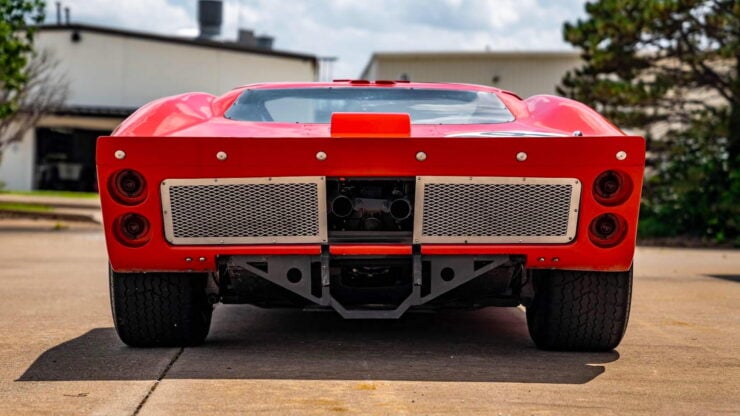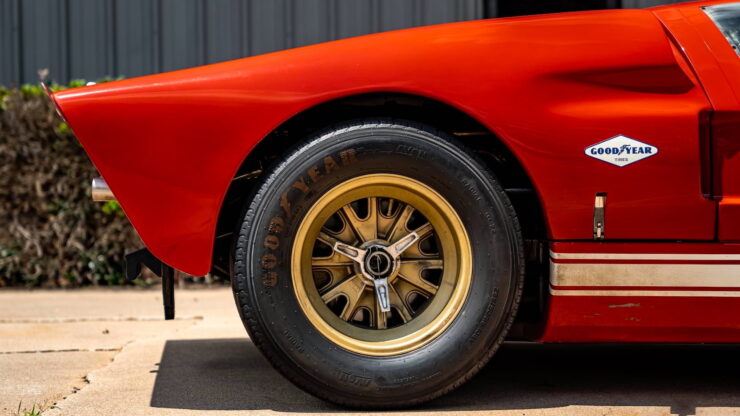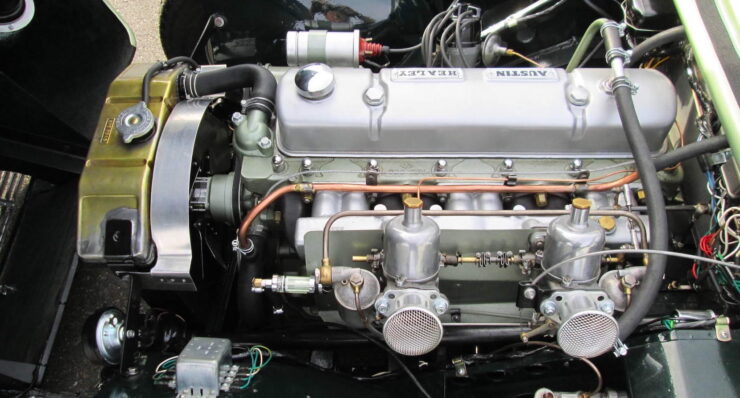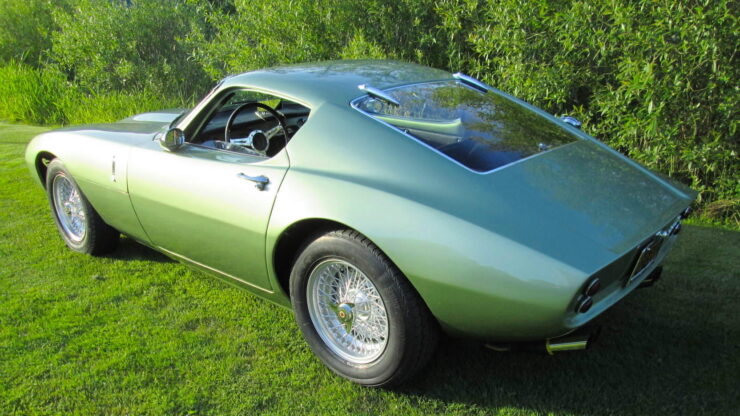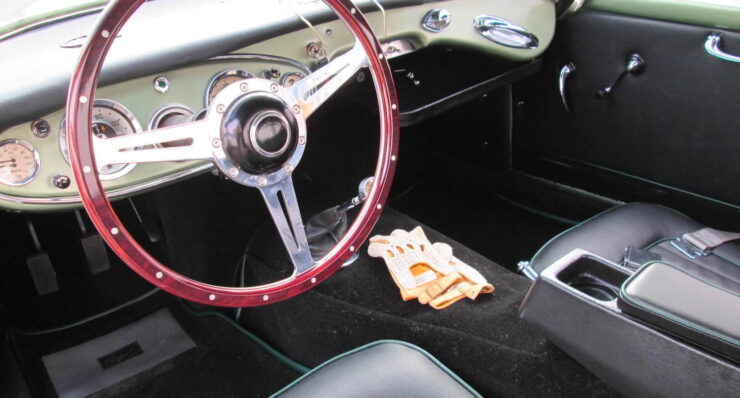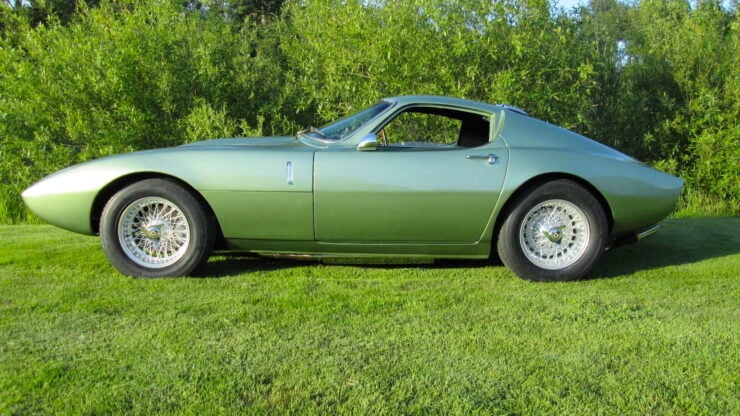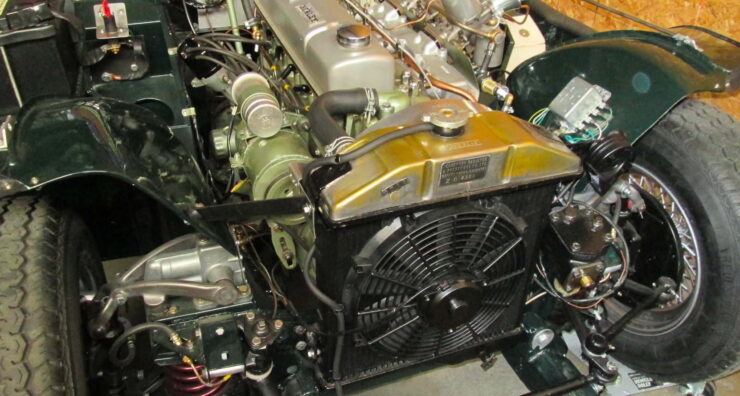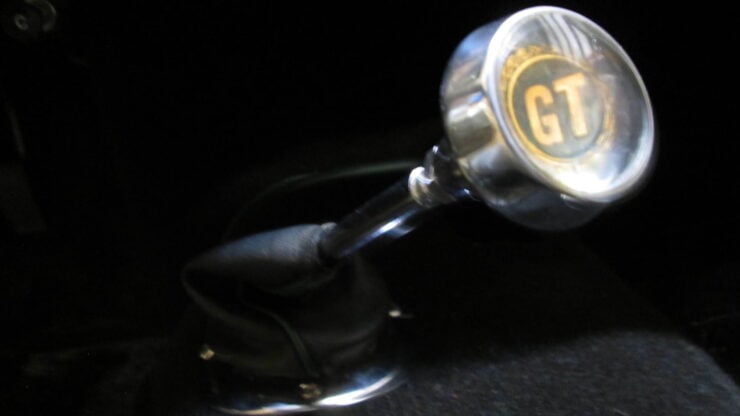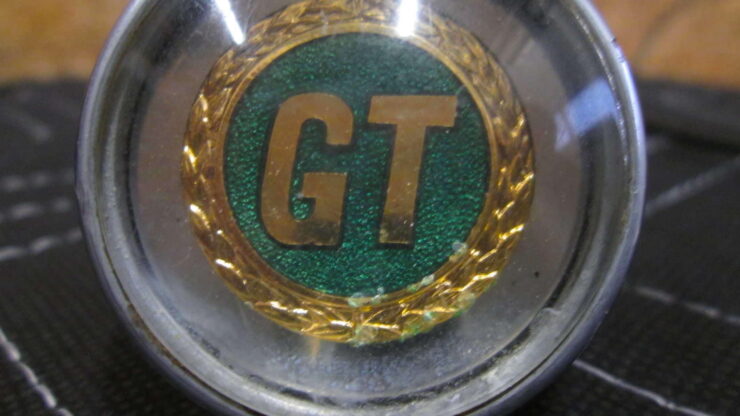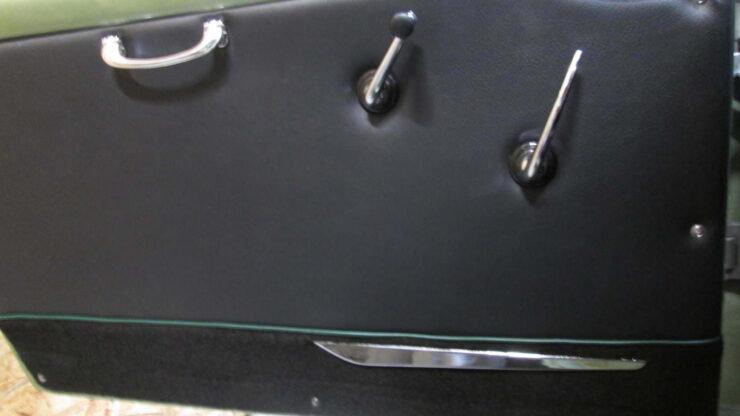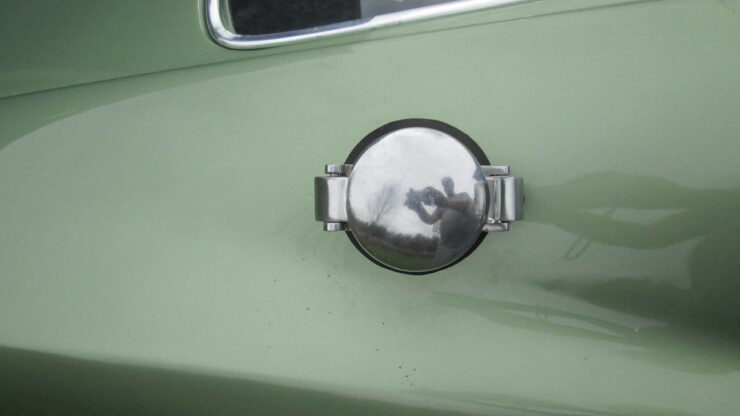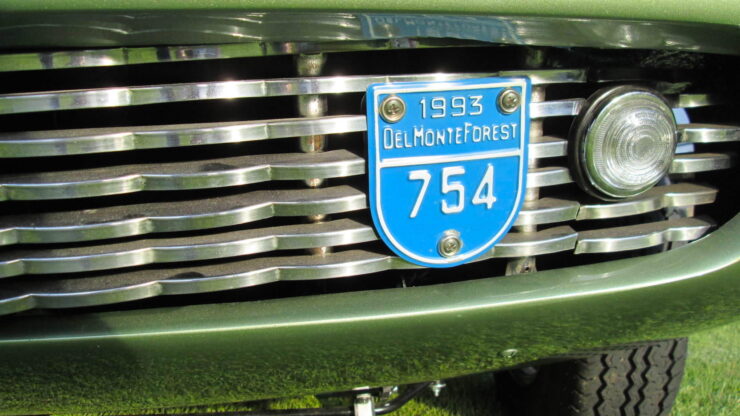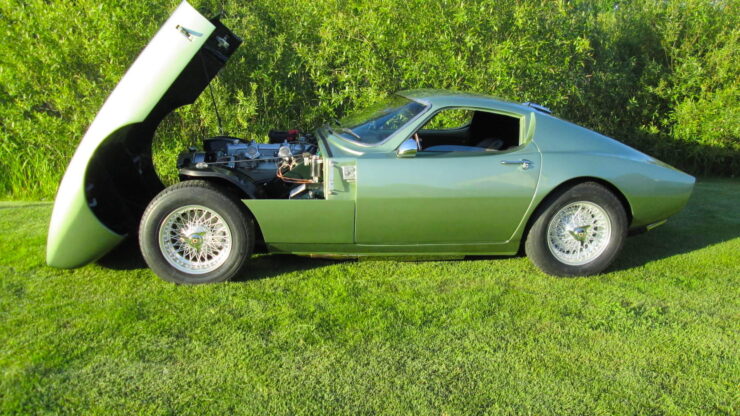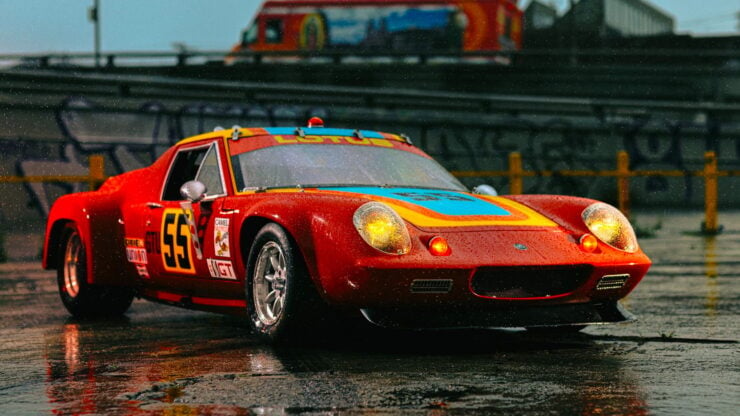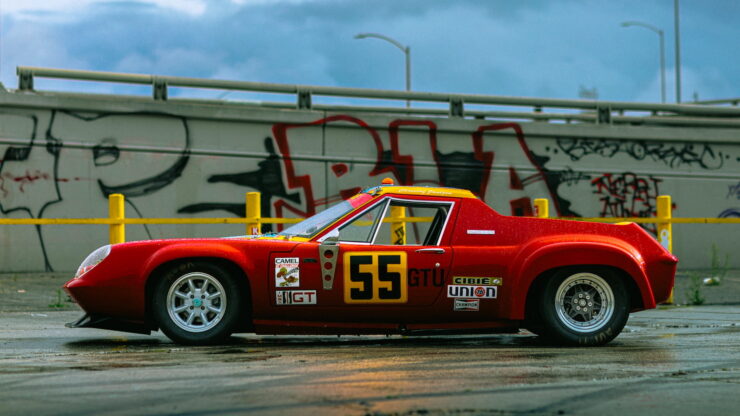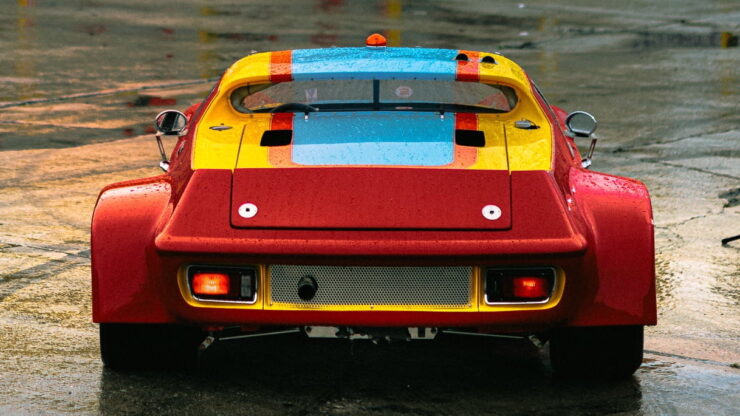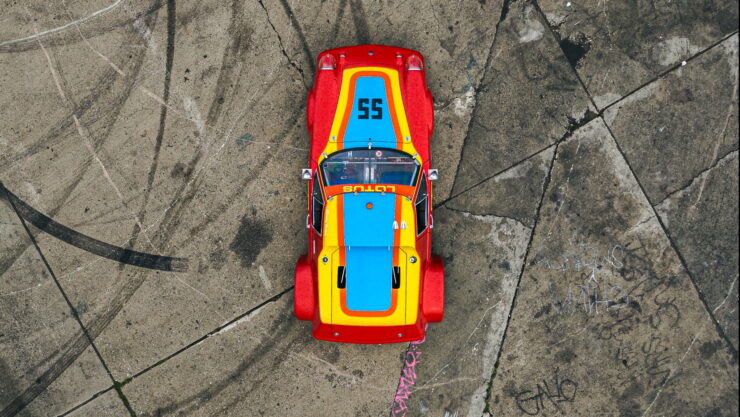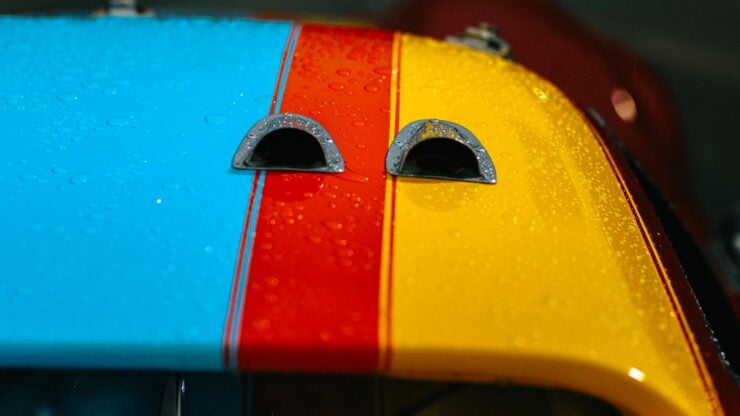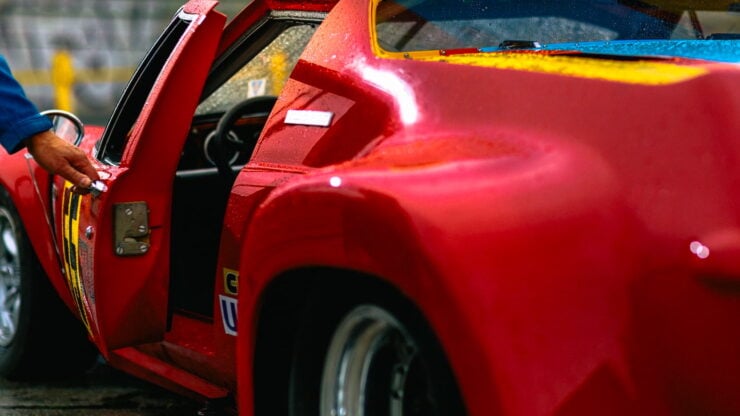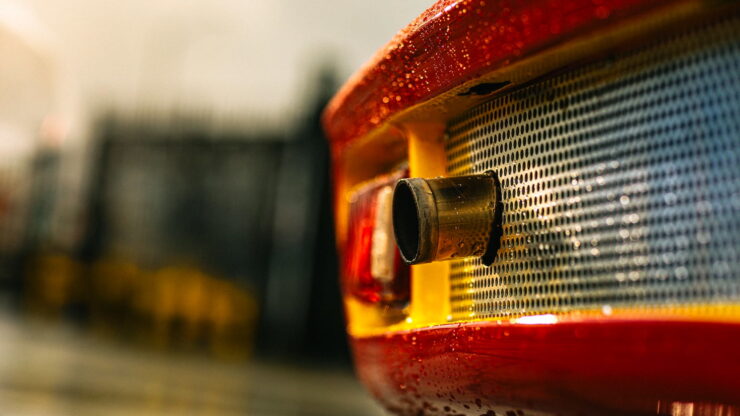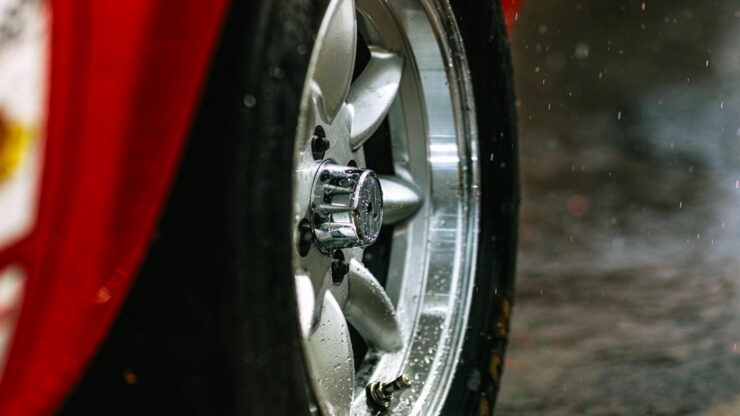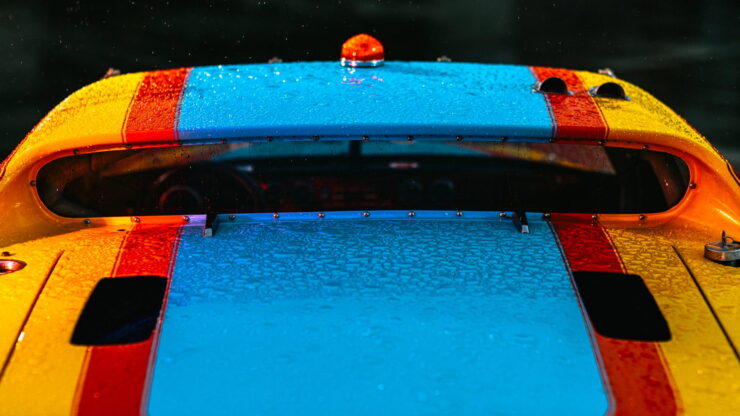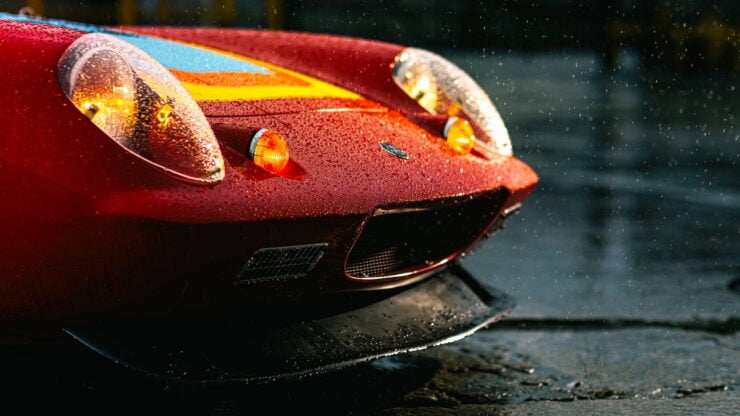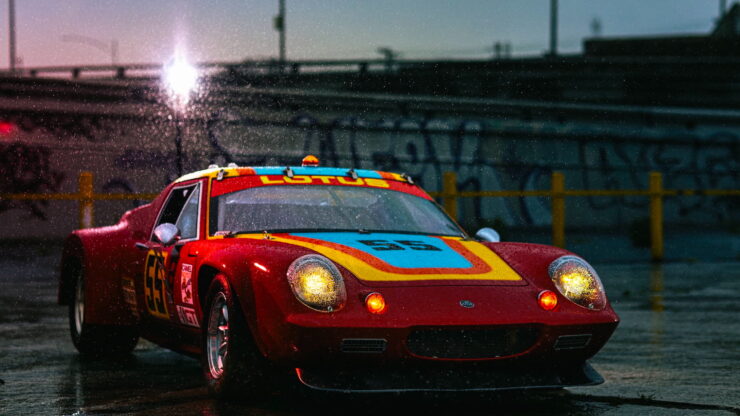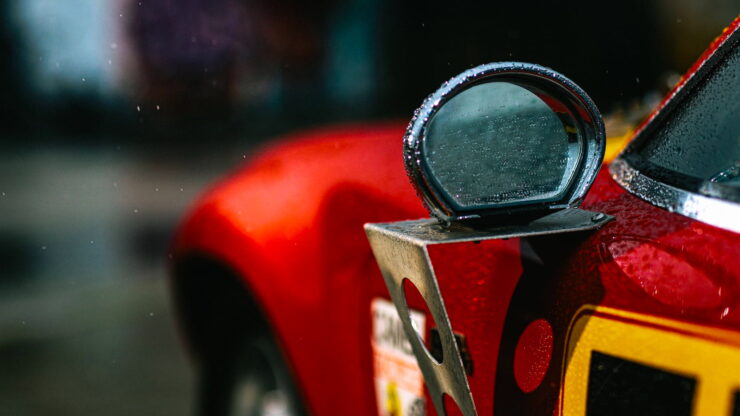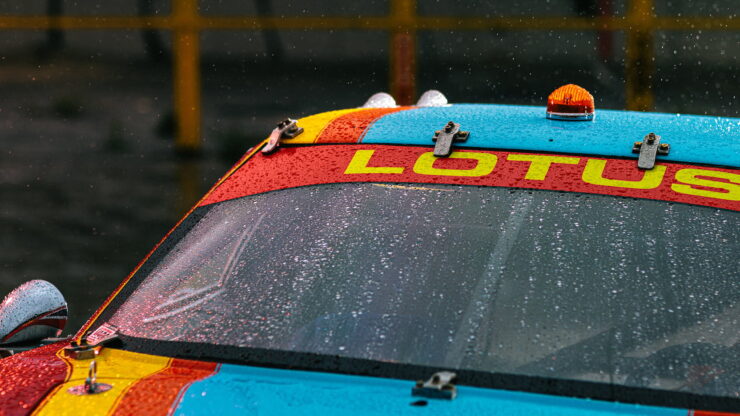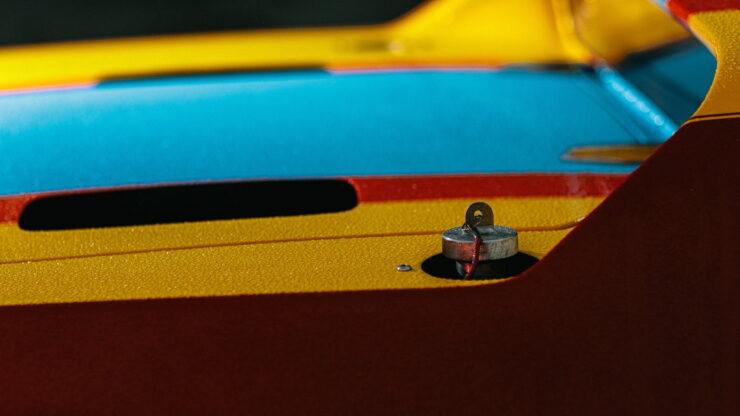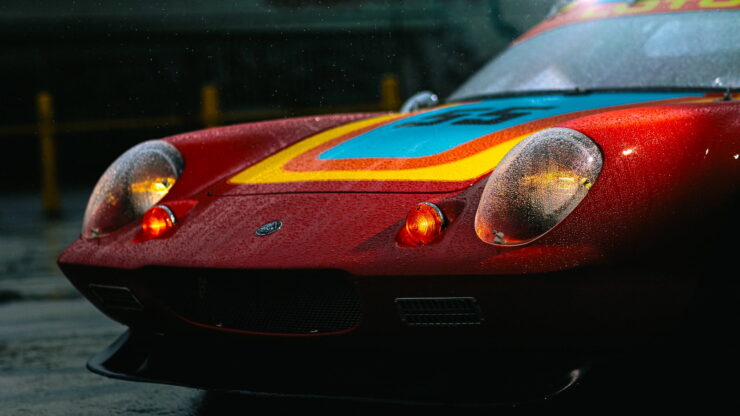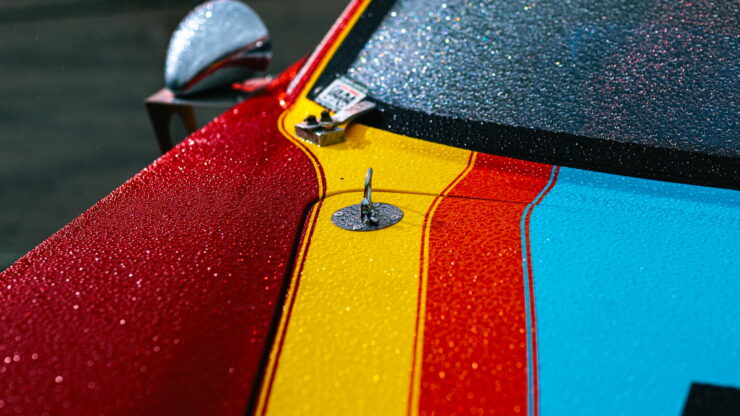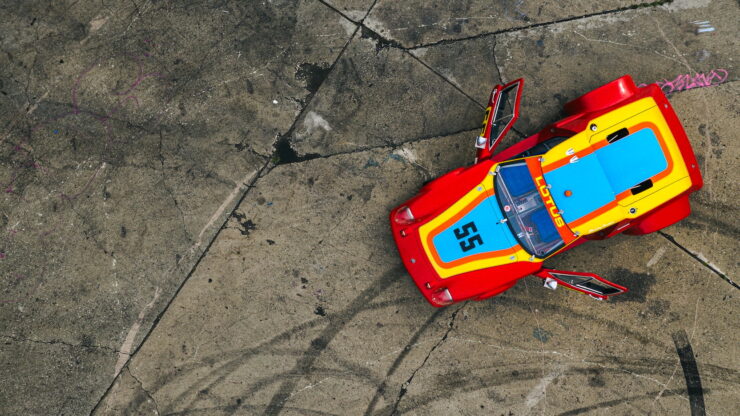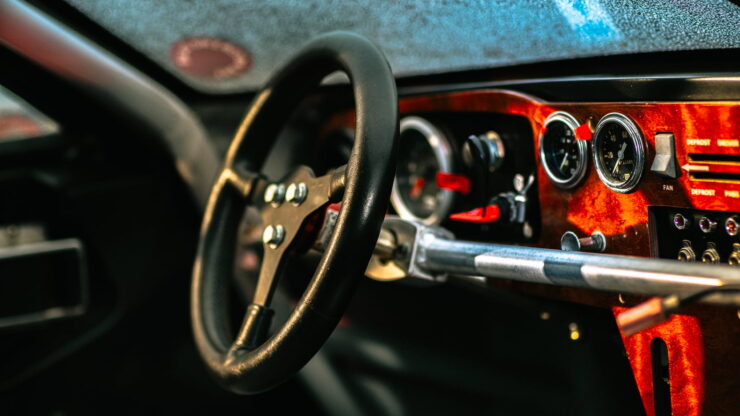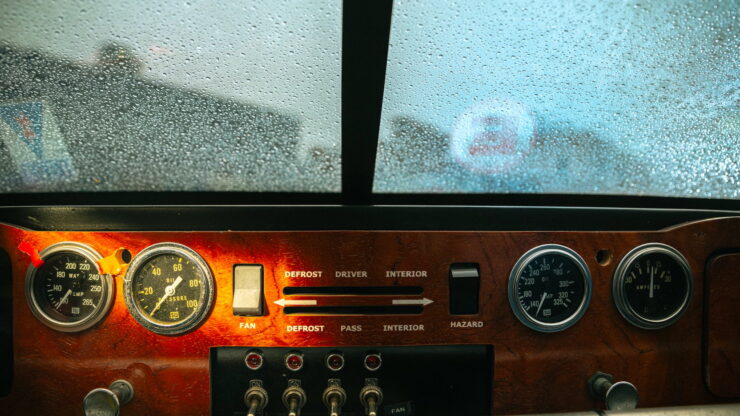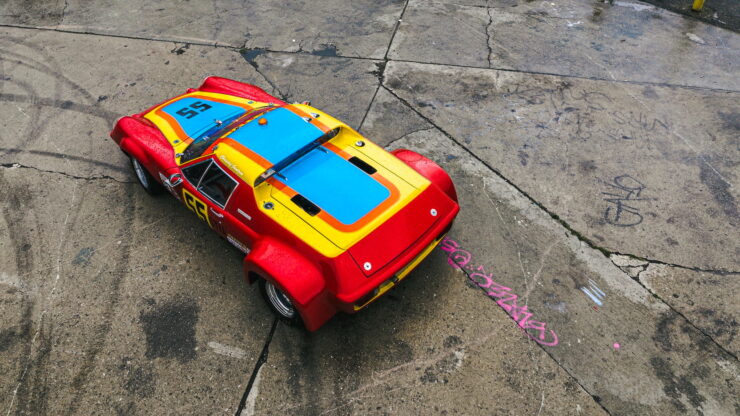For Sale: A Ford GT40 RCR Stunt Car From “Ford v Ferrari”
This is one of six GT40s built by RCR for the Oscar winning film Ford v Ferrari starring Christian Bale and Matt Damon. The car was built to 1966 Ford GT40 specifications for the movie with very close attention to detail.
Interestingly this is the only one of the six stunt cars that has a VIN and a title, meaning it can be road registered. The car is powered by a 5.7 liter V8, power is sent to the rear wheels via a 6-speed manual transmission and it was stickered No. 88 William Wonder for the 24 hours of Daytona scene in the film.
Ford v Ferrari would go on to be a major success for 20th Century Fox, earning almost a quarter of a billion dollars at the box office and receiving four Academy Award nominations – eventually winning two Oscars for Best Film Editing and Best Sound Editing.
Fast Facts – A Ford v Ferrari GT40 Stunt Car
- The original Ford GT40 was developed by Eric Broadley and his team at Lola Cars in Britain with additional input from Ford.
- The GT40 was developed with a single purpose in mind – to beat Enzo Ferrari at the 24 Hours of Le Mans and claim the world title.
- The Hollywood film Ford v Ferrari is based around the battle between the two automakers, centering on the story of Carroll Shelby and Ken Miles.
The Ford v Ferrari Battle
The story behind the Ford v Ferrari film will already be a familiar to many classic car buffs, but to cut a long story short, Ford was in negotiations to buy Ferrari in 1963 as the Italian company was struggling. Enzo Ferrari used the impending Ford acquisition to negotiate a better deal with his Italian compatriots over at Fiat – a deal that allowed him to keep both ownership and control of Ferrari.
When Ford executives, including Henry Ford II and Lee Iacocca, realized they’d been used they formulated a plan to beat Ferrari where it would hurt most – at the world famous 24 Hours of Le Mans endurance race. Ferrari had won every 24 Hours of Le Mans race from 1960 to 1965, so beating them there would make headlines around the world.
Above Image: The car was fully equipped for racing and used on screen at multiple points during the film.
How To Beat Enzo Ferrari
It would take a special car to beat Ferrari around the Circuit de la Sarthe in western France, the storied home of Le Mans. By the mid-1960s it seemed clear that for a car to be competitive it would need to be rear-mid engined, it would need excellent aerodynamics, and it would have to be capable of running flat out for 24 hours straight.
Ford didn’t have a car like this on hand, but an Englishman named Eric Broadley did. Broadley was the founder of Lola Cars based in England, and he had developed a car alongside John Frayling that just happened to be an aerodynamic, rear-mid engined endurance racer with excellent aerodynamics – it was called the Lola Mk6. Funnily enough it was already powered by a Ford V8.
The project to build the Ford GT40 was rapidly put into action, Eric Broadley agreed to work with the Americans on the project and he sold them two examples of the Lola Mk6. Former Aston Martin team manager John Wyer was brought onboard for the project, Wyer had guided the Aston Martin team to a Le Mans victory in 1959.
The final key addition to the project would be American engineer Roy Lunn who was sent over from Ford in the USA. Lunn had previously designed the rear-mid engined Mustang I concept car, and he was the only Ford engineer with experience working with this engine configuration.
The three men and their team rapidly developed the Ford GT40 chassis and body design, unveiling it only a year or so later in England followed by an exhibition in New York. Due in large part to the rapid development timeframe the 1964 year wasn’t successful for the GT40, there were many mechanical failures and other issues that eventually led to John Wyer being removed from the project (fairly or unfairly), and Carroll Shelby taking over.
Above Film: This is the official theatrical trailer for Ford v Ferrari.
Ford would get their Le Mans victories over Ferrari in 1966 and 1967, after this John Wyer would return and take over the Ford GT40 production facilities and the team would go on to win Le Mans twice more, in 1968 and 1969 – a final vindication for Wyer.
The Ford v Ferrari Stunt Cars
Given the subject matter, it was clear that Ford v Ferrari was going to require a number of GT40s for filming. It was also clear that the historic and monetary value of the original cars was going to be far too high for them to be used.
Fortunately there are a number of companies that build near-indentical replicas of the Ford GT40, including RCR (Race Car Replicas) of Fraser, Michigan. It would be RCR that were chosen to build many of the stunt cars for the film, they produced six in total and as mentioned above, the car you see here is said to be the only one with a VIN and a title.
This GT40 was named the Dan Gurney car as it was the No. 3 car used in the Le Mans race scene, it was also used for the 24 Hours of Daytona scene with a new No. 88 livery. Anyone who’s seen the film will have seen this car on screen being driven in anger.
The car is now due to roll across the auction block in early September with Mecum, there’s no price guide at the time of writing, and you can click here to visit the listing if you’d like to read more or register to bid.
Images courtesy of Mecum
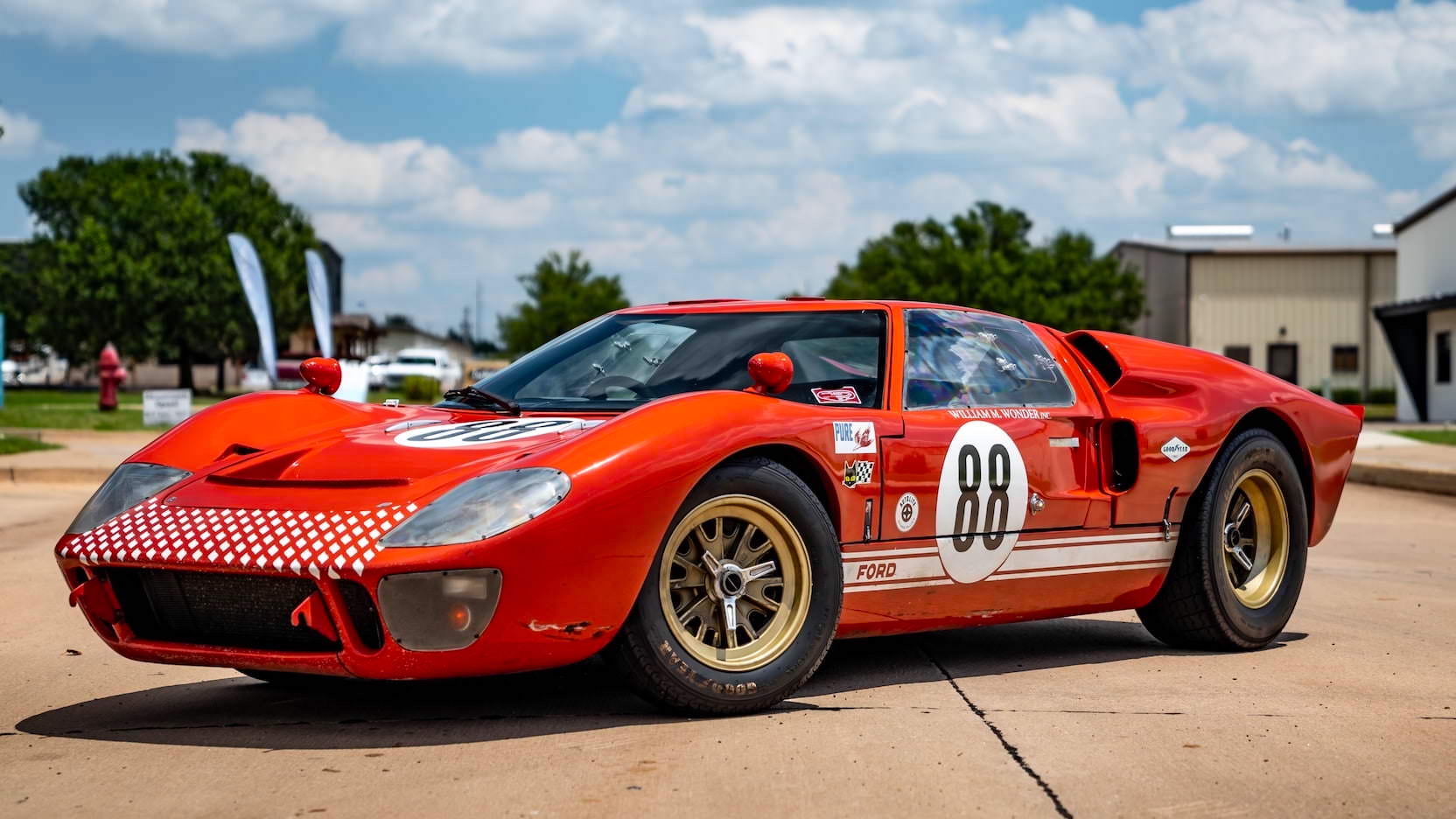
The post For Sale: A Ford GT40 RCR Stunt Car From “Ford v Ferrari” appeared first on Silodrome.
from Silodrome https://silodrome.com/ford-gt40-rcr/
via gqrds
from Tumblr https://somar78.tumblr.com/post/658693708297945088
from Tumblr https://somar78.tumblr.com/post/658688876245811200
Ever Seen One Before? It’s A Fiberfab Jamaican Austin-Healey 3000
If you’re looking at the car pictured above and wondering what it is, you’re not alone. It started life as a 1967 Austin-Healey 3000 however it obviously looks nothing like that now, because it was rebodied at some point in its life with a sleek Fiberfab Jamaican body.
The Fiberfab Jamaican was a body kit that could be fitted to the chassis of the Austin-Healey 3000, the MGA, Triumph TR3, or TR4. The sleek lines of the Jamaican made the kits popular, and many hundreds were built in the period.
_____
Fast Facts – The Fiberfab Jamaican Austin-Healey
✱ The Fiberfab Jamaican was a body kit for British sports cars, it was introduced in 1967 and proved popular due to its sleek modern lines.
✱ The Jamaican was named after Jamaica K. Goodwin, the wife of company founder Warren “Bud” Goodwin who would later be convicted of her manslaughter. He died in prison of a heart attack just one year after the Fiberfab Jamaican was introduced.
✱ Hundreds of examples of the Fiberfab Jamaican body kits were sold, with a small number being built directly by the factory. Today they enjoy a strong following and only come up for sale rarely.
The Austin-Healey 3000
The Austin-Healey 3000 was one of the most popular British roadsters of its age, it was raced with considerable success in European rallies and in tarmac racing everywhere from Sebring to the 24 Hours of Le Mans, to Mount Panorama in Bathurst, Australia.
Above Image: The Healey is powered by a ~3000cc inline-six, hence it’s model name.
The 3000 used body-on-frame construction as was common at the time, the car was developed in the late 1950s after all as the successor to the Austin-Healey 100/6 and the original Austin-Healey 100/4.
The car is powered by a front-mounted 3.0 liter (2,912cc) inline-six cylinder engine provided by Austin, with power fed back through a 4-speed manual transmission to the live axle rear.
From 1964 onwards the Austin-Healey 3000 BJ8 was in production, with 150 bhp up from 136 bhp in previous models thanks in part to a new higher lift camshaft and larger SU HD8 carburetors. These cars all had power brakes as standard, and many collectors consider the BJ8 to be the most refined of the 3000s.
The Fiberfab Jamaican
The process of converting a regular Austin-Healey 3000 into a Fiberfab Jamaican began with carefully removing much of the original body to make way for the new fiberglass shell.
The car’s original bulkhead would remain in place, helping to simplify the process somewhat as the dashboard and wiring loom could largely be left alone. Once fully fitted with doors, hood, and the rear opening hatch in place the car was visually transformed from a 1950s roadster into a futuristic GT car with lines that some say rival the Lamborghini Miura.
Above Image: The Jamaican has long been feted for its good looks, comparable to GT cars worth many times as much.
The history of Fiberfab, the company that made this body kit, is worthy of an article all to itself. The company started as Sports Car Engineering (SCE) in 1957, it was founded by amateur racing drummer Warren “Bud” Goodwin to manufacture fiberglass Mistral bodies under license and sell them as the SCE Spyder.
The company became Fiberfab Co. in 1964 and started building performance parts and fiberglass body panels for Mustangs, Corvettes, and Jaguars. Goodwin loved the fiberglass bodies built by fellow American company Devin, but he wanted to make them easier for homebuilders to complete.
In the mid-1960s the company released a few new bodies including the Apache, Aztec, and Aztec II, and the Corvette-based Centurion.
In 1967 company founder Warren “Bud” Goodwin was convicted in the manslaughter death of his wife (and the company president) Jamaica K. Goodwin. He would die in prison from a heart attack just a year later in 1968.
After this time Fiberfab went though a number of new owners and no small amount of scandal. In 2003 an effort was launched to restart Fiberfab and provide support for older models while providing kits for the Valkyrie model.
Above Image: Anyone familiar with the Austin-Healey 3000 will immediately recognize this interior as largely unchanged from the original car.
The Austin-Healey 3000 Fiberfab Jamaican Shown Here
The car you see here is curiously listed only as an Austin-Healey 3000 GT Coupe with no mention of its Fiberfab Jamaican body. It’s hard to know exactly why this is, however it’s undeniably a Jamaican.
As with any car built up from a kit or kit parts the Fiberfab Jamaican can be found in a wide variety of build finishes. Some builders do a wonderful job and some not so much.
The car shown here is one of the nicest looking examples we’ve seen, it’s listed as having had a frame-off restoration which was just completed and only 700 break-in miles with all fluids refreshed. It’s finished in Aston Martin light green metallic paint and it’s apparently one of very few factory assembled cars.
If you’d like to read more about this unusual Healey or register to bid you can click here to visit the listing. It’s due to roll across the auction block in mid-August and at the time of writing there’s no price guide.
Images courtesy of Mecum

The post Ever Seen One Before? It’s A Fiberfab Jamaican Austin-Healey 3000 appeared first on Silodrome.
from Silodrome https://silodrome.com/fiberfab-jamaican-austin-healey/
via gqrds
from Tumblr https://somar78.tumblr.com/post/658605044363657216
A Highly-Modified Lotus Europa Racer – 24 Hours of Daytona Veteran
This Lotus Europa is a road racer that competed in the 1978 Daytona 24 Hours after being comprehensively rebuilt into a dedicated race car capable of taking on the best in the world.
Automotive writer Peter Egan once said “Racing makes heroin addiction look like a vague wish for something salty.”
This pearl of wisdom was certainly true for the first owner of this Europa, who bought it as a regular factory-built JPS car before having it comprehensively transformed into a racer – he did this after he had competed at Daytona in it in 1976, and realized it had the potential to be far quicker.
Fast Facts
✱ This Lotus Europa first competed at Daytona in 1976, the racing bug bit the owner and he spend a small fortune converting it into a world class race car.
✱ The original engine and transmission were replaced, Porsche 914 wheel arch extensions were added, along with new suspension and brakes.
✱ The car was then driven in the 1978 Daytona 24 Hours by Emiliano Rodriguez and Hiram Cruz, they started in 58th position and finished a respectable 14th in class, covering 402 laps in 24 hours.
The Lotus Europa – A Mid-Engined Sports Car For The People
The Lotus Europa was born with motor racing embedded deeply within its DNA, it was developed as a mid-engined sports car by the same folks who were building world championship-winning Formula 1 cars, and it was priced to be considerably more affordable than the exotic offerings from companies like Ferrari and Aston Martin.
Above Image: The graceful lines of the Europa have been significantly enhanced, with Porsche 914 wheel arch extensions and much wider rubber.
The Europa was introduced in 1966 as one of the first mid-engine production sports cars in the world. Formula One cars had proven this configuration to be optimal for racing, and Lotus had won both the 1963 and 1965 Formula 1 Constructors’ Championships using the same fundamental layout.
Lotus founder Colin Chapman was a rare breed, both an exceptional engineer and a savvy businessman, and he quickly realized that a mid-engined sports car from a company that was building the most successful F1 cars in the world at the time would likely be a good seller. Particularly if he could keep the price down.
The structural design of the Europa was somewhat similar to the earlier Lotus Elite. Both cars used a steel backbone chassis with a fiberglass body, this helped keep the weight low and it also meant that Lotus didn’t need to invest in expensive steel stamping equipment.
Chapman was a master of sourcing parts from unusual locations and the Europa is a great example of this, the rack and pinion steering came from the Triumph Herald, with the engine and transmission coming from the Renault 16. Later versions of the car used the Lotus Twin Cam engine resulting in a significant power gain, however those earlier Renault-powered cars proved to be remarkably cheap to run and maintain.
Lotus kept the Europa in production from 1966 until 1975 when it was replaced with the Lotus Esprit, which used a very similar structural design to its forebear with a modern angular body penned by Giorgetto Giugiaro.
The Lotus Europa Road Race Car Shown Here
The Europa you see here started out as a John Player Special (JPS) car with the popular Twin Cam engine, it was delivered to its first owner in 1973 and he promptly began racing it. It became quickly apparent that the car could be significantly faster with some work, so a comprehensive rebuild began.
Above Image: With period racing history in the Daytona 24 Hours this car would be a welcome entrant in many vintage motorsport events today.
The Daytona Europa Specifications
The original Twin Cam engine was removed and replaced with a new engine built by Pick’s Racing Engines, they started with a Cosworth BDA block and added flat-top CP pistons, CP rings, Carillo connecting rods, a Marine crankshaft, and a Moroso engine pre-heater.
The completed engine had a compression ratio of 12:1, dual Weber 45 DCOE carburetors, custom stainless-steel exhaust headers, a dry-sump lubrication system, and a Mallory ignition. Power was vastly improved and as a result the original Renault gearbox was never going to survive, so it was replaced with a race-spec 5-speed Hewland transmission.
The hub carriers and other suspension pieces were replaced with heavy-duty components and Porsche 914 wheel arch extensions were added to help cover the new 13 x 9 (front) and 13 x 11 (rear) Jongbloed alloy wheels.
The completed car was driven in the 1978 Daytona 24 Hours by Emiliano Rodriguez and Hiram Cruz, they started in 58th position and finished a respectable 14th in class, covering 402 laps in 24 hours.
In 2014 the car was given a detailed restoration back to the configuration it was in when it raced at Daytona, since the restoration was completed the car has raced just twice, and would now make an excellent entry into the world of vintage racing for a new owner.
Mecum will be offering the car in mid-August at their Monterey Auction, if you’d like to read more about it or register to bid you can click here to visit the listing.
All images provided by Mecum Auctions
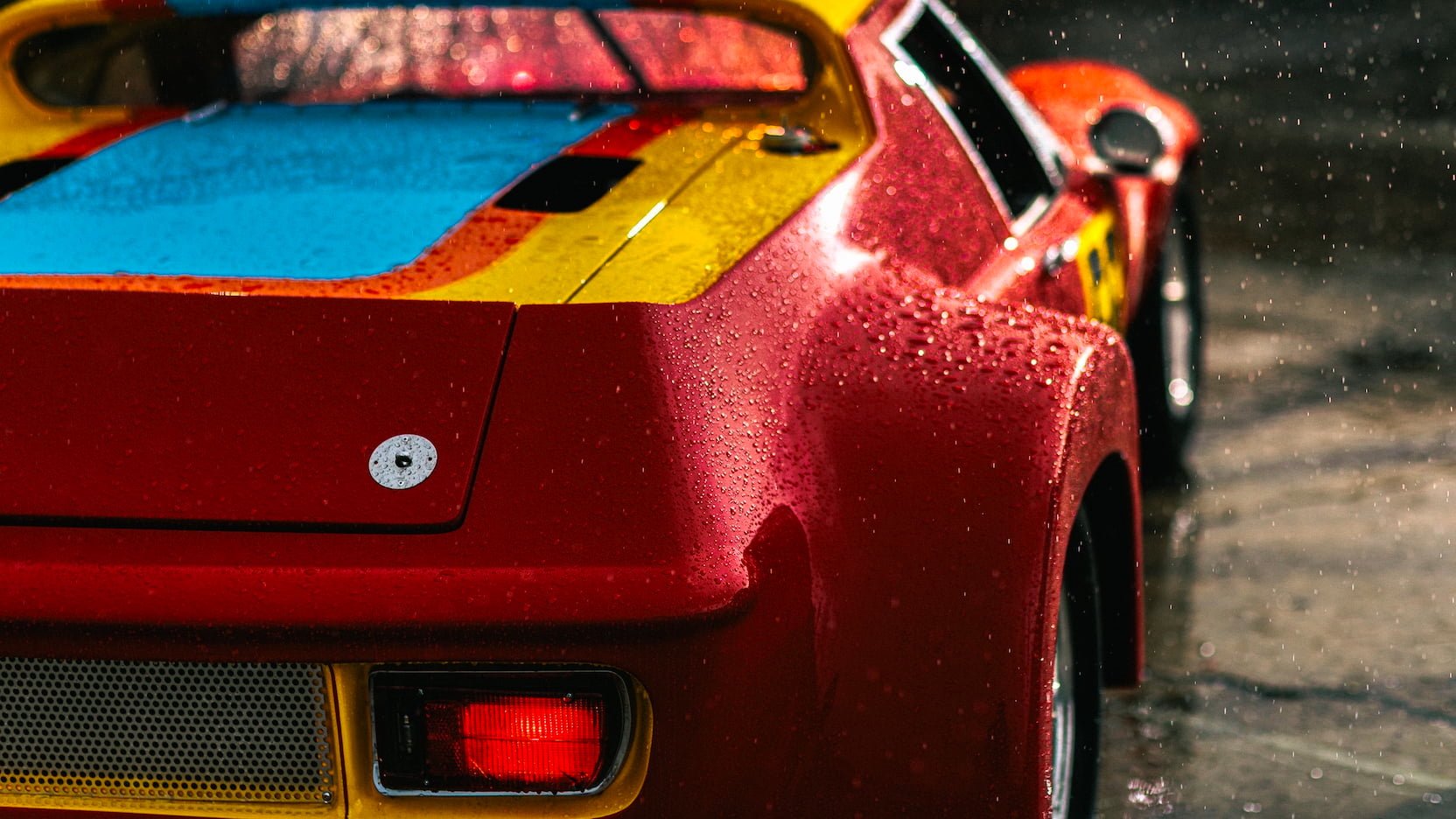
The post A Highly-Modified Lotus Europa Racer – 24 Hours of Daytona Veteran appeared first on Silodrome.
from Silodrome https://silodrome.com/lotus-europa-race-car/
via gqrds
-
Two-tone 1974 Volkswagen Baja Bug from Tumblr https://78.media.tumblr.com/73c6b6e000f95d3cae9a743a42cac396/tumbl...
-
Mercedes-Benz W 460 280 GE Cabriolet from Tumblr https://78.media.tumblr.com/795b38a3a6e28277791071326f2...
-
The Ferrari 275 GTB Competizione is a car that very nearly never existed, it was hurriedly developed from the standard 275 GTB road car afte...
-
qtaroqhoji : itsbrucemclaren : —– 1981 Mitsubishi Lancer - 2000 TURBO GROUP 4 —- turboじゃない素の1600GTでもよく走った よくあるデザインテ...
-
hemmingsmotornews : Copper custom 1962 Chevrolet Bel Air for sale on Hemmings.com. from Tumblr https://78.media.tumblr...
